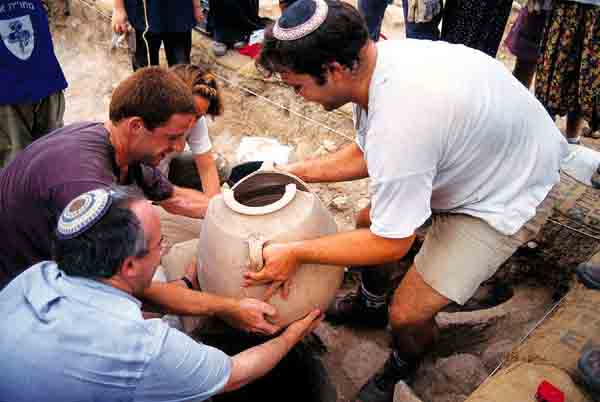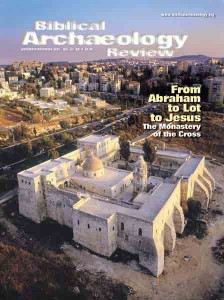2001 Update: The Dig Goes On
Sidebar to: Excavating Philistine Gath: Have We Found Goliath’s Hometown?

Despite the worrisome political situation in Israel—which led to the cancellation or the scaling back of many digs—the Tell es-Safi excavation proceeded as planned this past summer. We made major progress archaeologically, but perhaps even more gratifying was the fact that, despite the violence, we were able once again to attract participants from all over the world.
In our primary field of excavation, area A, on the northeastern side of the tell, we continued to expose the rich late ninth/early eighth century B.C.E. destruction level. Finds included a beautifully decorated chalice with an unusual decoration painted on after firing. We also found fragments of a vessel with applied figures that may have been used for cultic purposes.
One of our major aims this season was to define the levels immediately preceding this late ninth/early eighth-century B.C.E. destruction. We uncovered several strata below the destruction level, including at least one level that dates, based on its pottery, to the tenth/ninth centuries B.C.E. (early Iron Age IIa). Below this, we uncovered two additional levels apparently dating to the 11th century B.C.E. (late Iron Age I). These lower levels yielded several complete Philistine vessels and ivory objects. These levels may ultimately have an important bearing on the ongoing debate concerning the chronology of the Iron Age.
Already a library member? Log in here.
Institution user? Log in with your IP address.

